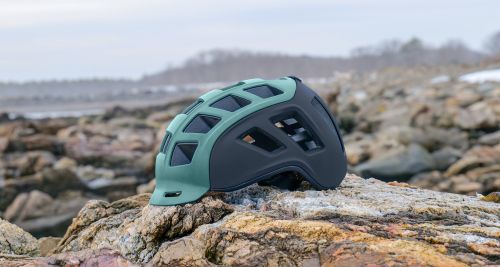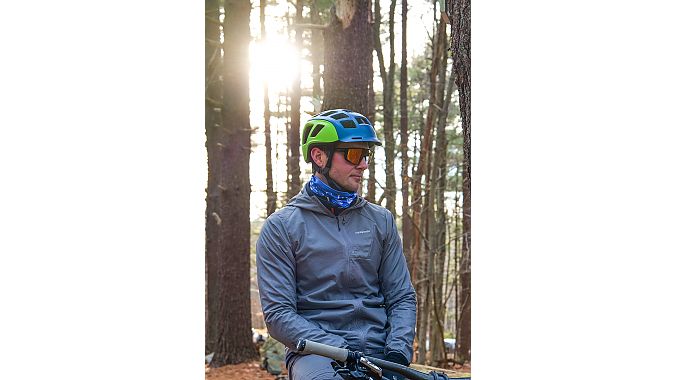BOSTON (BRAIN) — "Adaptability" is a buzzword that's become as much a part of the bicycle industry as "game-changer." Still, it's a bit rare when you can call a helmet adaptable. But that's what start-up company Bridger calls its new helmet, and it might well prove to be a game-changer.
A two-piece removable patent-pending outer shell allows you to quickly change it to, for example, provide more venting for the summer or more insulation during the winter. It will be marketed for year-round use as a bicycle and snow sports helmet and come in a variety of colors.
"We realized that people — ourselves included — have become accustomed to buying a helmet and being stuck with the way it looks and functions," said Ryan Eiler CEO and co-founder with brother Peter Eiler. "You can manipulate your bike suspension to adapt to the terrain. You can change eyewear lenses to suit bright or low light, but when it comes to your helmet, it's not at all adaptable like the rest of your gear."
That was the genesis of Bridger three years ago.
"If you're riding in tar-melting heat, you can pop on the highly ventilated summer shell," Ryan Eiler said. "If you're fat-biking on a sub-zero day, the insulated shell and earpads go on in a snap to keep you comfortable. Or, if you're commuting to work, you have a variety of high-visibility, more functional choices to keep you safe. The bottom line is that we're now allowing you to easily customize your helmet for both looks and for function without using any crazy tools."
Targeting fall release
If all goes well with Kickstarter backers, Eiler said the helmet should be out in the fall for a target MSRP of $195, with additional shells going for $30. "Think of it as slightly premium, but cheaper than having two or more helmets, and still more affordable than a lot of the high end — overpriced — stuff out there today. If you want to change the way it looks, now you can spend $30 on a new shell, instead of shelling out — not sorry for the pun — a multiple of that for an entirely new helmet."
The helmet will feature XRD foam, which is similar to memory foam but firms up more on impact, Eiler said. He also noted that the foam has been used on some high-end hockey helmets but hasn't been utilized much in the bike/snow disciplines because of its design complexity.
The helmet also features removable and ergonomically shaped ear pads, a magnetic buckle designed to be closed with one hand, and a dial fit tensioner. It's been a long process to get to this point, Eiler said, starting with pencil drawings that led to a CAD model that became "a massive endeavor to teach ourselves everything that there is to know about foam, plastic and manufacturing."
He said they're on version No. 564 of the design, with most research centered around developing an efficient and safe shell-locking mechanism, or the Configurable Retention System. Low-profile anchors on the sides lock the shell in place "to maintain safety, minimize weight, and remain hidden out of sight," said Eiler, who added the R&D has been done in Boston, manufacturing in Utah with the molding being completed in Asia.
Another safety feature of the Bridger is because the outer shell can be removed, the foam shell can be inspected easier for damage. The cycling shell version will weigh about 430 grams with Eiler saying many hours were spent discussing where to shave weight without compromising safety.
"When we were breaking down old helmets and doing our research, I found out that the foam under the shell of my old ski helmet was melted from being dried out near a heater, Eiler said. "Had I hit my head on that part of the helmet, it would have been nearly useless, and there was no way for me to discover that deficiency without destroying the helmet."
DTC distribution at first
Eiler said Bridger will be sold direct-to-consumer to start with the hope of getting it into some local East Coast shops. "We have some plans for a 'Phase B' distribution strategy, but we're looking to prove our helmet through online sales first," he said. "This will also give us more control early on, since we plan to implement an easy size exchange policy. We'll also be offering consumer-friendly options for recycling old helmet parts, as well as a discounted scratch/crash replacement program."
Selling 3,000 helmets in 2021 is the initial target with more ambitious goals the following year.
"We started from scratch with the mindset that your helmet should be able to function at a much higher level than it does now," Eiler said.




